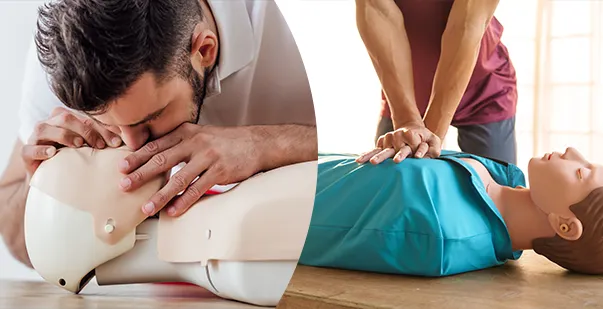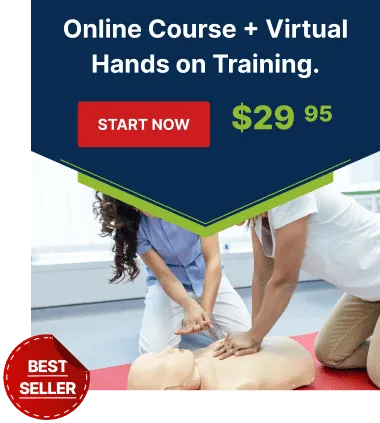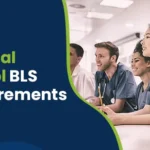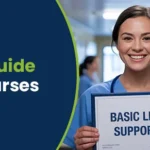Table of Contents:
- What is Hands-Only CPR, and how do you perform it?
- What is Mouth-to-Mouth CPR, and how does it work?
- When to Use Hands-Only CPR
- When to Use Mouth-to-Mouth CPR
- Hands-Only CPR vs. Mouth-to-Mouth CPR
- Hands-Only vs. Mouth-to-Mouth CPR: Making the Right Choice
Consider a situation where you are in a public place, and someone suddenly collapses. People around are panicking, unsure of what to do. At that moment, you can perform CPR and save a person from dying. But what kind of CPR should you perform? Hands-Only CPR vs. mouth-to-mouth CPR, both can save lives, but they work in different ways.
Hands-only CPR is simple, effective, and easy for bystanders to perform. Pushing hard and fast on the chest keeps blood flowing and buys time until professional help arrives. Mouth-to-mouth resuscitation, on the other hand, works in specific cases. Drowning, drug overdoses, and respiratory failure often require immediate rescue breaths. Continue reading to understand their differences, whether Mouth-to-Mouth is necessary for CPR, when to use each method, and how to perform them correctly.
Master ACLS Now
Get ACLS certified with confidence
What is Hands-Only CPR, and How to Perform It?
Hands-Only CPR is a method that involves only chest compressions. It does not include rescue breaths. It helps maintain blood flow to the brain and other organs when the heart stops beating.
According to the Hands-Only CPR definition, this method is recommended for adults who collapse suddenly in public. It is a preferred method of CPR as it is easier to perform and encourages bystanders to take action without hesitation. The key steps to perform Hands-Only CPR are as follows:
- Call 911 Immediately: If the person is unresponsive and not breathing, seek emergency help right away.
- Position Your Hands Correctly: Place the heel of one hand in the center of the chest. Put your other hand on top and interlock your fingers.
- Begin chest compressions: Press hard and fast at a rate of 100-120 compressions per minute. Push down at least 2 inches deep.
- Continue Until Help Arrives: Keep compressing the chest without stopping until medical professionals take over or the person starts breathing again.
What is Mouth to Mouth CPR, and How Does It Work?
Mouth-to-mouth CPR includes both chest compressions and rescue breaths. This type of CPR is often used for children, infants, or victims who have stopped breathing due to drowning, choking, or overdose. Many people ask if mouth-to-mouth is still used. The answer is yes. It is still used, but if you are wondering if mouth-to-mouth is necessary for every cardiac arrest case, then no, it isn’t. Hands-Only CPR is usually recommended for most bystanders responding to adult cardiac arrest. The main steps to perform mouth-to-mouth CPR are as follows:
- Call 911: If the person is unresponsive and not breathing, get emergency help immediately.
- Check for Breathing: Look for chest movements and listen for any breathing sounds.
- Open the Airway: Tilt the head back and lift the chin to open the airway.
- Give rescue breaths: Pinch the nose shut, seal your mouth over theirs, and give two slow breaths. Each breath should make the chest rise.
- Perform Chest Compressions: Push hard and fast at 100-120 compressions per minute in the center of the chest.
- Repeat the cycle: Continue giving 30 chest compressions followed by two breaths until medical help arrives.
Read More: When Do Pauses in Compressions Occur During CPR
When to Use Hands-Only CPR
Do you have to do mouth-to-mouth CPR for every case? The answer is no. It is not always necessary. Hands-Only CPR is a simple way to help someone who has collapsed and is not breathing due to sudden cardiac arrest. It does not require mouth-to-mouth breaths. Instead, it only involves pressing down on the chest again and again to keep blood moving. Here are some instances where you might have to do CPR without mouth to mouth:
When an Adult Collapses Suddenly
If an adult suddenly falls to the ground and does not respond, Hands-Only CPR should begin right away. This usually happens because the heart has stopped working.
Without quick help, the brain and other organs will not get the oxygen they need. Pressing hard and fast in the center of the chest can keep the person alive until an ambulance arrives.
When You Do Not Know Full CPR
Full CPR includes both chest compressions and mouth-to-mouth breaths. Many people have not learned how to do it or may forget the steps. Hands-Only CPR is much easier. It does not need special training. Anyone can do it by pressing hard and fast in the center of the chest. This makes it possible for more people to help in an emergency.
When You Do Not Want to Give Mouth-to-Mouth Breaths
Some people may feel hesitant to give mouth-to-mouth breaths, especially when assisting someone of another gender. They may also worry about personal space, cleanliness, or doing it wrong.
Because of this, they may hesitate and not help at all. Hands-Only CPR removes this problem. Since no breathing is needed, more people may be willing to act quickly and save a life.
When There Is a Risk of Spreading Disease
Infections can spread from person to person, especially through mouth-to-mouth contact. During flu seasons or disease outbreaks, many people worry about getting sick while helping others. Hands-Only
CPR is a safe option because there is no direct contact with the person’s mouth. This makes it a good choice in situations where health risks exist.
When to Use Mouth-to-Mouth CPR
A common question you may have is, when is mouth to mouth required for CPR? In some cases, it is necessary. Rescue breaths provide oxygen when the person cannot breathe on their own. Some other instances where you can use mouth-to-mouth CPR are as follows:
When a Child or Infant Is Not Breathing
If a baby or a young child stops breathing, performing mouth to mouth CPR is necessary. Their small bodies do not store as much oxygen as adults, so they need breaths along with chest compressions. This helps deliver enough oxygen to their lungs and keeps them alive until professional medical care is available.
When a Person Has Drowned, Overdosed, or Choked
Mouth to mouth CPR is important if a person has stopped breathing due to drowning, a drug overdose, or choking. In these situations, the body lacks oxygen before the heart stops. Chest compressions alone are not enough because there is already very little oxygen in the blood. Giving rescue breaths helps bring oxygen back into the body and improves the chances of survival.
When the Person Had Breathing Problems Before Cardiac Arrest
If someone had trouble breathing before their heart stopped, mouth-to-mouth CPR is needed. Conditions like asthma, lung disease, or severe infections can reduce oxygen levels in the body. When the heart stops in these cases, there is not enough oxygen left in the blood. Rescue breaths help restore oxygen and support the body until emergency help arrives.
When Cardiac Arrest Is Caused by Breathing Failure
Sometimes, cardiac arrest happens because the person cannot breathe properly for a long time. This can happen due to severe lung infections, allergic reactions, or suffocation. In these cases, CPR mouth to mouth is necessary because the body did not have enough oxygen before the heart stopped. Without rescue breaths, the person’s chances of survival are much lower.
Hands-Only CPR vs. Mouth-to-Mouth CPR
The two main types of CPR, Hands-Only vs. Mouth-to-Mouth CPR, both help restore blood circulation but function differently. Knowing CPR vs. Mouth-to-Mouth is important for giving the right care in emergencies. The table below provides a clear comparison of how each method works and when to use them.
| Feature | Hands-Only CPR | Mouth-to-Mouth CPR |
| Involves Breathing Assistance | No, it relies only on chest compressions to circulate blood. | Yes, it includes rescue breaths to provide oxygen directly into the lungs. |
| Primary Use | Recommended for adults who suddenly collapse due to cardiac arrest, especially in public places. | Used for children, infants, drowning victims, and individuals who stopped breathing before cardiac arrest. |
| Technique | Focuses on continuous chest compressions at a rate of 100-120 compressions per minute. | Combines chest compressions (30 compressions) with rescue breaths (2 breaths per cycle). |
| Ease of Performing | Easier to perform, especially for untrained bystanders. Requires no breathing assistance. | More complex as it involves both compressions and proper airway management for rescue breaths. |
| Risk of Infection | Lower risk since it does not involve direct mouth-to-mouth contact. | Higher risk due to direct contact, increasing the chance of disease transmission. |
| Effectiveness | Effective in maintaining circulation and delivering oxygen already present in the blood to vital organs. | More effective in situations where oxygen levels are critically low and an external oxygen supply is needed. |
| Situations Where It Is Preferred | Ideal for public emergencies where immediate action is required and the responder is hesitant or untrained in providing rescue breaths. | Preferred when cardiac arrest is caused by respiratory failure, such as drowning, choking, drug overdose, or asthma attack. |
| Oxygen Supply | Does not provide additional oxygen; relies on the oxygen already in the bloodstream. | Provides fresh oxygen to the lungs, which is crucial for victims with respiratory-related issues. |
| Survival Outcomes | Studies show that for most adult cardiac arrest cases, Hands-Only CPR is just as effective as traditional CPR. | Necessary in cases where oxygen deprivation is the main cause of cardiac arrest, significantly improving survival chances. |
Read More: How Long To Perform CPR?
Hands-Only vs. Mouth-to-Mouth CPR: Making the Right Choice
When you know the differences between Hands-Only CPR and mouth-to-mouth CPR, you can use the most appropriate technique to save a life during an emergency. Hands-only CPR is best for adults who collapse suddenly, as it keeps blood flowing without the need for rescue breaths. Mouth-to-mouth CPR is needed for children, drowning victims, and people who stopped breathing before their hearts stopped.
Acting quickly in an emergency can make a big difference. Even if you are not fully trained, doing something is always better than doing nothing. You should take online basic life support (BLS) training to stay prepared for saving a life when it matters the most.
References:
https://www.heart.org/-/media/Files/Affiliates/WSA/Oregon/Hands-Only-CPR-vs-CPR-with-Breaths.pdf
